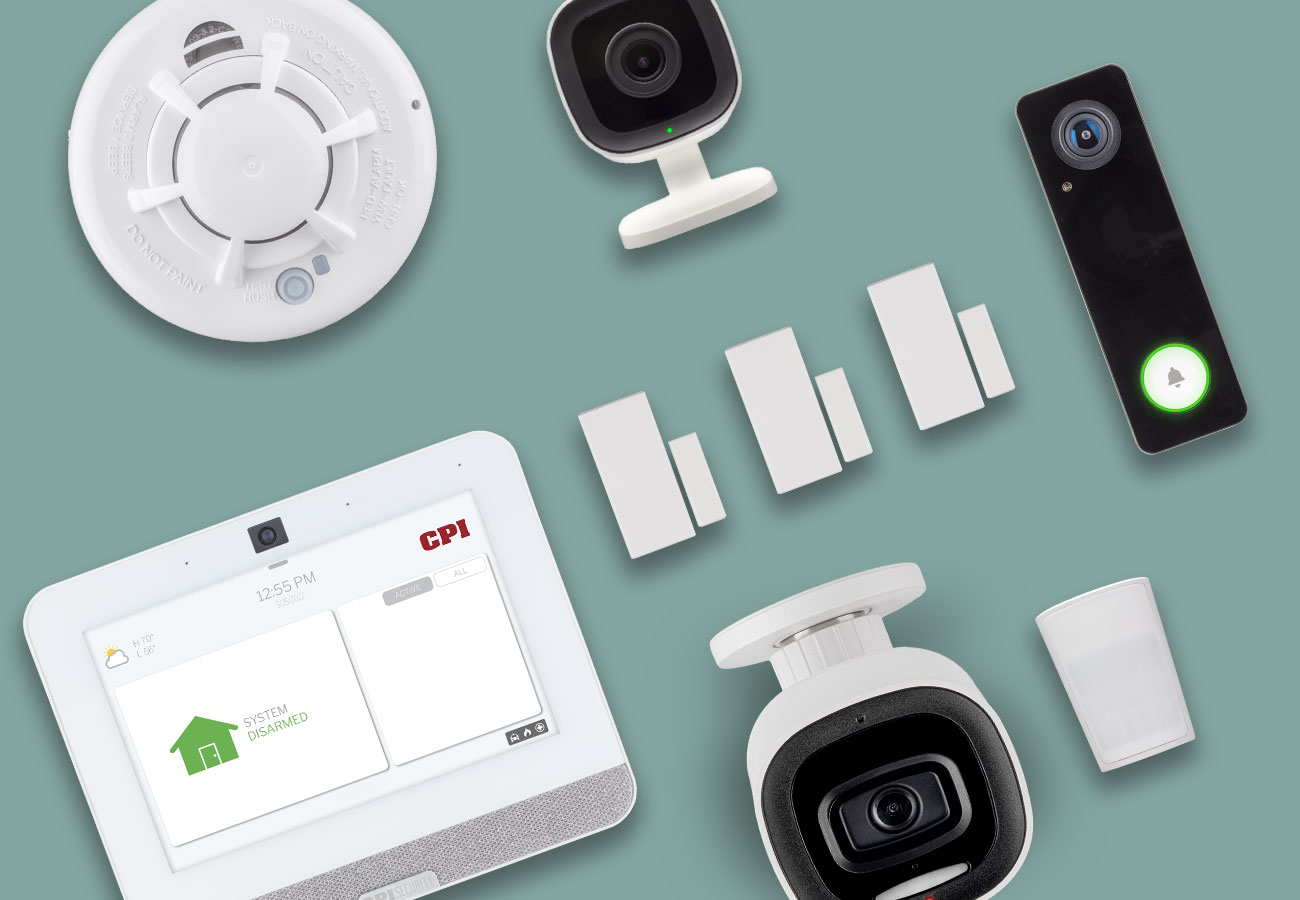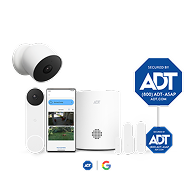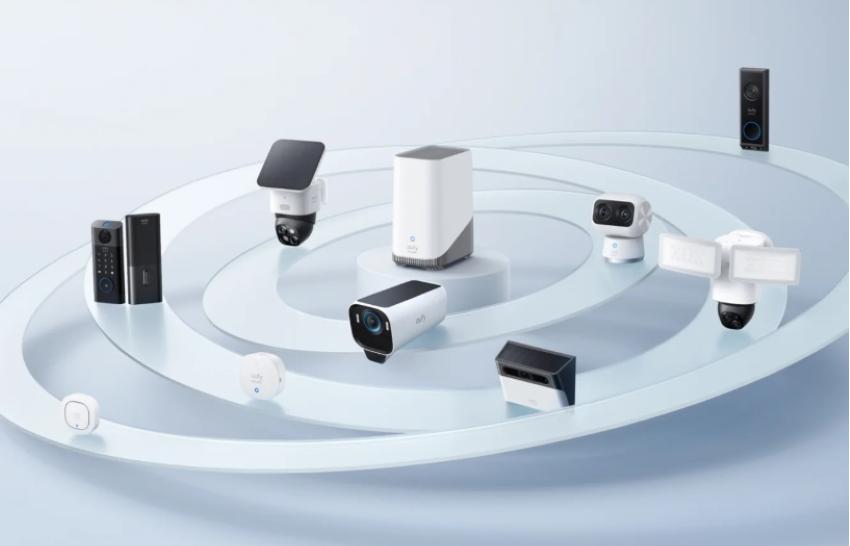Want to make your home safer without spending a fortune or calling a pro? You’re in the right place.
With smart devices, upgrading your home security is easier than ever. Imagine checking your front door from your phone or getting alerts if something feels off—all with simple tools you can install yourself. Keep reading to discover easy DIY upgrades that put you in control and give you peace of mind every day.
Your home security just got smarter and simpler.

Credit: cpisecurity.com
Choosing Smart Security Devices
Smart security devices make your home safer. Picking the right ones is key. Here, we guide you through selecting these devices.
Consider features, budget, and compatibility. This ensures your system works smoothly.
Key Features To Look For
Devices should have essential features. Look for motion detection and night vision. These improve your home’s security.
Mobile alerts and easy installation are also important. They offer convenience and quick setup.
- Motion detection for spotting intruders
- Night vision for clear images at night
- Mobile alerts for instant notifications
- Easy installation for quick setup
Budget-friendly Options
Quality security devices don’t have to be expensive. Many affordable options exist. They offer great features without breaking the bank.
Consider brands that provide good value. They balance cost and features well.
- Affordable brands with essential features
- Devices offering good value for money
Compatibility With Existing Systems
Ensure new devices work with your current system. This avoids extra costs and complications.
Check if devices integrate with your smartphone or voice assistant. This adds convenience and ease of use.
- Check compatibility with current security systems
- Ensure integration with smartphones and voice assistants
Installing Smart Cameras
Smart cameras help protect your home by watching key areas. You can check video from your phone anytime.
Installing smart cameras is simple and does not need special skills. You just need to choose good spots and follow setup steps.
Best Locations For Cameras
Place cameras where they can see the main entrances. This includes front doors, back doors, and garage doors.
Other good places are near windows and driveways. Avoid pointing cameras at busy streets to reduce false alerts.
- Front door
- Back door
- Garage entry
- Ground floor windows
- Driveway or parking area
Wireless Vs Wired Cameras
Wireless cameras are easy to install. They use Wi-Fi and do not need cables, so you can move them if needed.
Wired cameras need power cables and sometimes internet cables. They offer stable connections and do not lose signal.
- Wireless: simple to place anywhere, runs on batteries
- Wired: needs cables, steady power and signal
- Wireless may need frequent charging
- Wired works well for long-term use
Setting Up Motion Detection
Turn on motion detection to get alerts when something moves near your camera. This helps catch activity quickly.
Adjust the motion zones to focus on important areas. You can lower false alarms by ignoring streets or trees.
- Enable motion alerts in the camera app
- Set detection zones to cover doors and windows
- Adjust sensitivity to reduce false alarms
- Test by walking in front of the camera
Smart Door Locks And Access Control
Smart door locks help keep your home safe with new technology. They make it easy to control who enters your house.
You can use a smartphone or special codes to manage your door locks. These devices add extra security without hard work.
Types Of Smart Locks
There are many smart locks to choose from. Each type works differently to secure your door.
- Keypad locks use numbers to open the door.
- Bluetooth locks connect to your phone nearby.
- Wi-Fi locks allow remote control from anywhere.
- Fingerprint locks use your unique fingerprint.
- Combination locks mix traditional keys with smart features.
Remote Locking And Unlocking
Remote locking lets you control your door from your phone. You can lock or unlock the door even when you are away.
This helps if you forget to lock your door or need to let someone in. Your phone app connects to the smart lock using the internet.
- Check if your door is locked at any time.
- Lock or unlock your door with a tap.
- Get alerts when someone enters your home.
Temporary Access For Guests
Smart locks let you give guests a temporary code. This lets visitors enter only for a set time.
You can create one-time or timed access. This keeps your home secure while being convenient for friends or workers.
- Give a code that works for hours or days.
- Remove access as soon as guests leave.
- Track when guests use the code to enter.

Credit: www.adt.com
Using Smart Sensors
Smart sensors help improve home security easily. They detect unusual activities and alert you fast.
These sensors work with your phone or smart home system. You can install them yourself without much skill.
Window And Door Sensors
Window and door sensors sense when they open or close. They alert you if someone opens them unexpectedly.
These sensors are small and easy to attach. Place them on the frame and the door or window itself.
- Detects forced entry
- Works quietly in background
- Can trigger alarms or notifications
Glass Break Detectors
Glass break detectors listen for the sound of breaking glass. They alert you if a window breaks.
These sensors cover a wide area and help protect large windows. They add an extra layer of security.
- Detects shattering sound
- Works day and night
- Triggers alarms instantly
Integrating Sensors With Alerts
Smart sensors connect to your phone or alarm system. They send alerts when they detect a problem.
You can choose how to get alerts. Options include texts, app notifications, or loud sirens.
- Real-time phone alerts
- Automatic alarm activation
- Easy setup with smart apps
Voice Assistants For Security
Voice assistants can help you control your home security. They make it easy to manage devices using simple voice commands.
Using voice assistants with smart devices adds convenience and quick access to your security system.
Setting Up Voice Commands
Start by connecting your voice assistant to your smart security devices. This allows you to control devices by speaking.
Create clear and simple voice commands. This helps the assistant understand your requests quickly.
- Use short phrases like “Lock the front door” or “Turn on security cameras.”
- Test commands to make sure they work properly.
- Adjust settings in the voice assistant app for better recognition.
Linking Devices For Automation
Link your smart devices to create automated actions. This helps your home respond to voice commands smoothly.
For example, you can set your lights to turn on when you say “I’m home” or lock doors at night automatically.
- Connect smart locks, cameras, and lights to your voice assistant.
- Create routines or scenes in the app for multiple devices.
- Use automation to improve security without extra effort.
Privacy Considerations
Voice assistants listen for commands, so privacy is important. Protect your personal data and home security.
Check the privacy settings and limit data sharing to trusted services only. Turn off the microphone when not in use if possible.
- Review voice assistant privacy policies carefully.
- Use strong passwords and two-factor authentication.
- Keep your device software updated to fix security issues.
Mobile Apps And Remote Monitoring
Smart devices make home security easier with mobile apps. You can watch and control your security system from anywhere.
Remote monitoring lets you stay connected to your home. Use your phone to check your house anytime, day or night.
Real-time Notifications
Mobile apps send alerts when something happens at home. You get instant messages about doors opening or alarms sounding.
These notifications help you act quickly. You can check if everything is safe or call for help if needed.
- Receive alerts for unusual activity
- Customize notification settings
- Stay updated on your home’s status
Live Video Streaming
Many smart security devices offer live video feeds. You can watch your cameras directly from your mobile app.
This feature lets you see what is happening in real time. It helps you check on pets, kids, or packages at the door.
- View multiple camera angles
- Zoom in for a closer look
- Record and save video clips
Managing Multiple Devices
Mobile apps let you control many smart devices in one place. You can adjust cameras, sensors, and alarms easily.
Managing devices from one app saves time. It keeps your home security system organized and simple to use.
- Control lights, locks, and cameras
- Set schedules for devices
- Get status updates for each device
Power And Connectivity Tips
Smart home security devices need strong power and internet connections. Without them, they may not work well.
These tips help you keep your devices connected and powered all the time.
Ensuring Reliable Wi-fi
Wi-Fi is the main way smart devices connect to your home network. A weak signal can cause problems.
Use a strong router placed in a central spot. Avoid thick walls that block signals.
- Place your router high and in an open area
- Update your router’s firmware regularly
- Use Wi-Fi extenders to cover dead zones
- Choose 2.4 GHz band for better range
Backup Power Solutions
Power outages can stop your security devices from working. Backup power keeps them running.
Use battery backups or uninterruptible power supplies (UPS) for important devices.
- Install rechargeable batteries in cameras and sensors
- Use a UPS for routers and hubs
- Check and replace batteries regularly
Optimizing Device Placement
Where you place devices affects their power and connection quality. Good placement improves performance.
Keep devices near power outlets and within Wi-Fi range. Avoid metal objects and thick walls.
- Place cameras at corners with a clear view
- Keep sensors away from large electronics
- Test signal strength before final installation
Maintaining Your Smart Security System
Keeping your smart security system working well is important. Regular care helps protect your home.
This guide covers key tasks to maintain your smart devices and keep your system reliable.
Regular Firmware Updates
Smart devices need firmware updates to fix bugs and add features. Updates improve security and performance.
Check for updates often and install them promptly to keep your system safe and up to date.
- Set devices to update automatically if possible
- Manually check for updates monthly
- Restart devices after updates to apply changes
Testing And Troubleshooting
Test your smart security devices regularly. Make sure sensors, cameras, and alarms work correctly.
If something does not work, troubleshoot the problem quickly to keep your home protected.
- Test motion sensors by walking past them
- Check camera feeds on your phone
- Listen for alarm sounds during tests
- Restart or reset devices if they fail tests
Upgrading Over Time
Technology changes fast. Upgrade your smart security devices when needed to stay secure.
Adding new devices or replacing old ones can improve your system’s coverage and features.
- Replace outdated devices every few years
- Add new sensors for blind spots
- Upgrade apps and software on your phone
- Choose compatible devices for easy integration

Credit: safemo.com
Frequently Asked Questions
What Are The Best Smart Devices For Home Security Upgrades?
Smart cameras, video doorbells, motion sensors, and smart locks are top choices. They provide real-time alerts and remote access. These devices are easy to install and integrate with home networks. They improve security without professional help. Choose devices compatible with your smartphone for convenience.
How Do Smart Security Cameras Enhance Home Safety?
Smart cameras offer live video streaming and motion detection alerts. They record suspicious activities and store footage securely. Many include night vision and two-way audio. These features deter intruders and provide evidence if needed. Cameras can be accessed remotely via mobile apps for constant monitoring.
Can I Install Smart Home Security Devices Myself?
Yes, most smart security devices are designed for DIY installation. They usually come with clear instructions and user-friendly apps. No special tools or expertise are required. This saves installation costs and allows customization. Ensure your Wi-Fi is strong for optimal device performance.
How Do Smart Locks Improve Home Security?
Smart locks allow keyless entry with codes or smartphone apps. They provide real-time access logs and temporary guest codes. This eliminates lost keys and unauthorized access. Many smart locks can integrate with other security devices. They offer convenience and enhanced control over home entry.
Conclusion
Smart devices make home security simple and affordable. You can install cameras, sensors, and alarms yourself. These tools help watch your home day and night. They send alerts straight to your phone. No need for complex setups or high costs.
Small upgrades add strong protection to your space. Stay calm knowing your home is safer now. Easy steps today keep trouble away tomorrow. Start with one device and build your system. Protect what matters without stress or hassle.
11 min read

